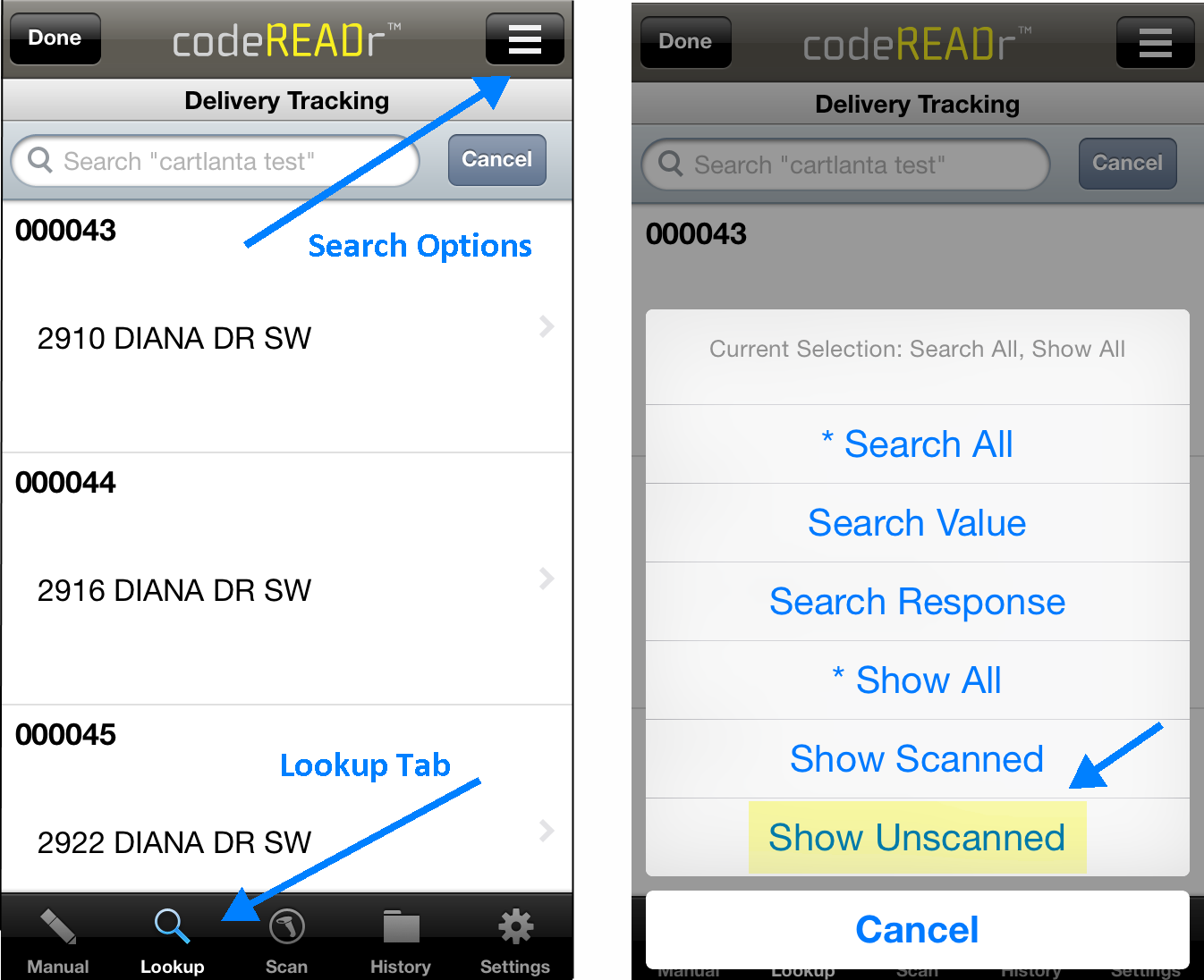Basic Database Searching
Learn how to efficiently search your database and track scanned and unscanned barcode values using CodeREADr’s powerful tools. Whether you’re performing basic searches or leveraging advanced features, this guide ensures you maximize the platform’s capabilities.
Follow these steps to search for barcode values or responses within your database:
- Navigate to Databases:
- Click on the Databases tab in the navigation bar.
- Click the database’s name or select the Edit Database button to access the search functionality.
- Search for Barcode Values:
- If your database has at least one entry, the search page will appear automatically. Otherwise, click the Search tab.
- In the search box labeled Values and responses, enter any string or value to search for.
- This could be a barcode’s value or its response.
- Searches are not case-sensitive and match partial strings.
- Execute the Search:
- Press the Search button to retrieve results matching your input.
Advanced Database Searching
Leverage the Advanced Search feature for more powerful search options, including real-time scanned and unscanned data updates.
Search Scanned and Unscanned Values
- Use the Advanced Search option on the Database, then select a service from the dropdown list. This allows you to differentiate between scanned (accounted) and unscanned (unaccounted) values.
- Real-Time Updates: Results update in real-time, provided app-user devices have internet connectivity. Refresh the page to see the latest data.
Important Notes:
- Scanned/unscanned status depends on the selected service. For repetitive tasks, create a new service for each day using the Duplicate option to simplify setup.
- You must select a service and scroll down the page to view the results.
Create and Share Links
Share real-time status updates with team members or clients using password-protected Share Links.
- Create a Share Link:
- Generate a Share Link for any service.
- Name the link after the specific task or service for easy identification.
- Access Without Signing In:
- Share the link to allow others to view the Disposition List via a web browser without needing to log in.
- Note: Shared users can only view the list, not edit or download it.

In-App Lookup for App Users
Enable app users to search within the database directly from their devices.
- Filter Results: Users can search by:
- Barcode value
- Response
- All entries
- Example Use Case: If responses include “Order A, Route 1,” “Order B, Route 1,” etc., users can filter results to see unscanned items for a specific route or order.

Key Settings for In-App Lookup
- Ensure the service type is Validate Scans for scanned/unscanned tracking.
- Adjust duplicate scan settings:
- For one-time use services, set duplicates as valid.
- For repetitive services, set duplicates as invalid and configure periodic resets (hourly, daily, etc.).
- Enable visibility for app users to see scans from others by modifying settings in the Advanced step when creating/editing a service.
Using Scan Links
Scan Links enable custom handling of scans via web links, providing a seamless workflow for app users.
- What Are Scan Links?
- A custom URI scheme that sends scan data to the app when a link is clicked.
- Ideal for replacing the app’s default Lookup view with a URL you specify.
- How to Enable: Create a webpage with links formatted like this:
"codereadr://scan/?id=SCAN_VALUE"
- Edit the service’s settings on the Advanced page.
- Enter your custom URL under Enable custom web view ‘Lookup’.
Maximize your productivity with CodeREADr by mastering its database search, sharing, and in-app lookup features. For more advanced use cases, explore custom Scan Links to tailor workflows to your needs.